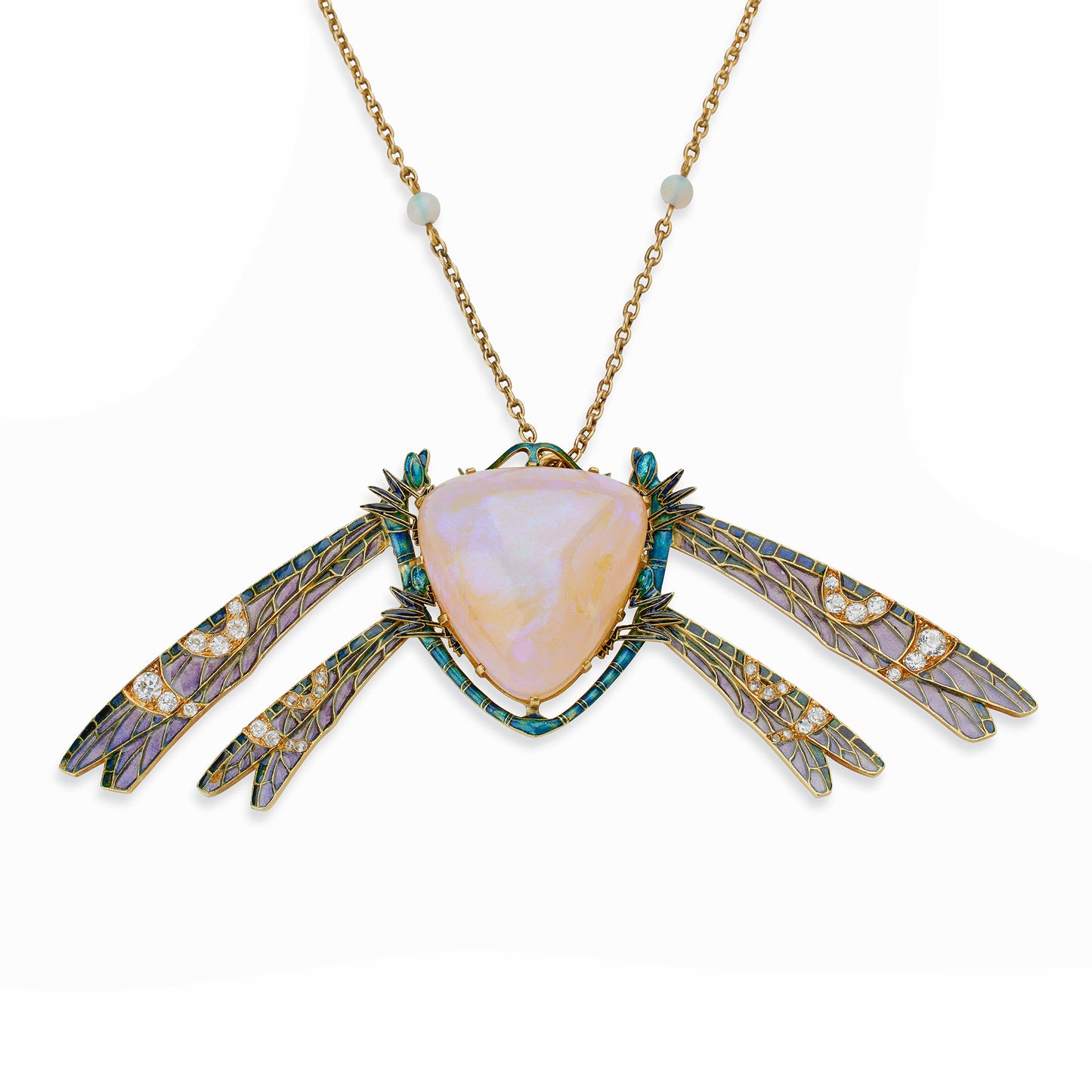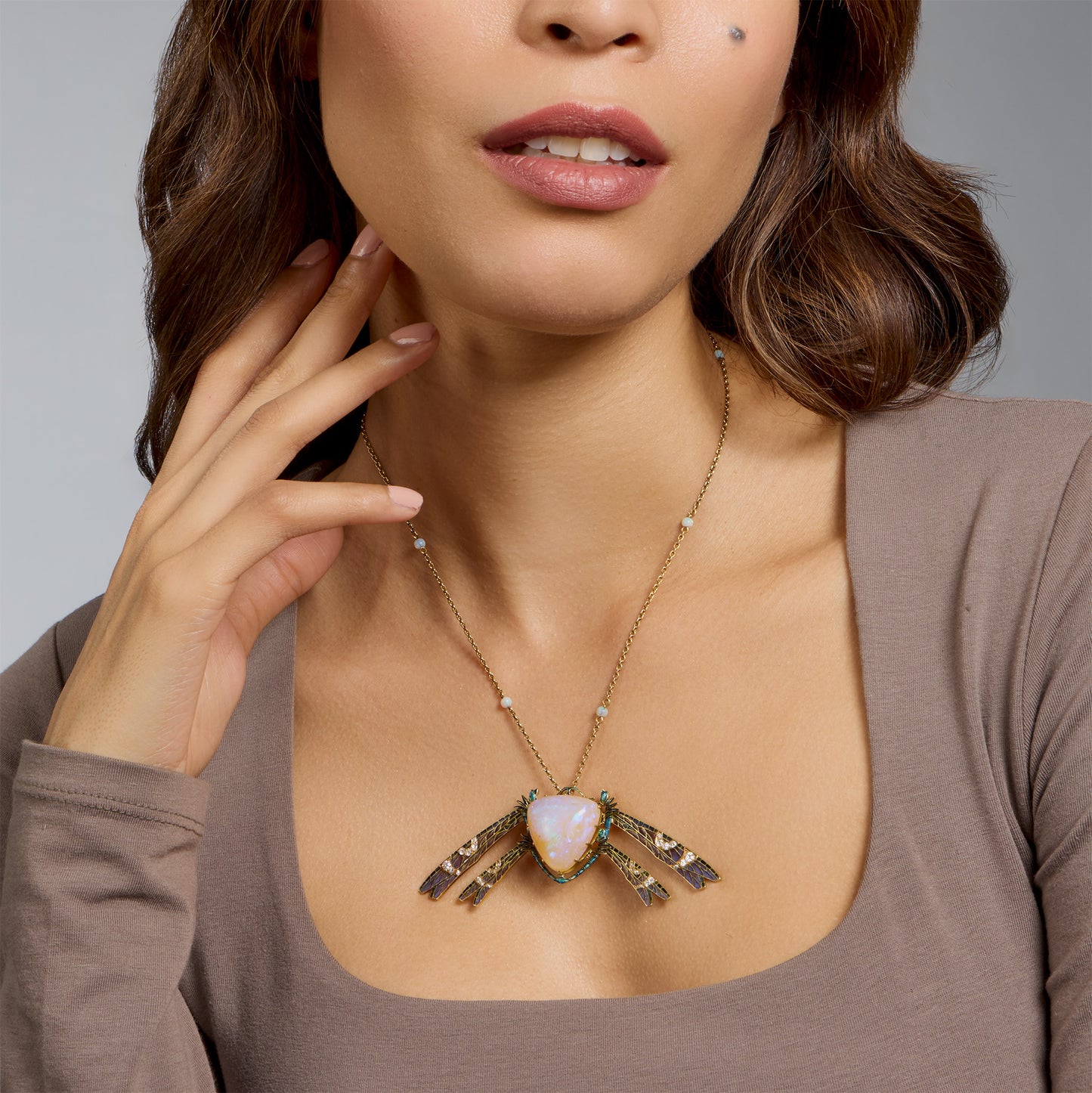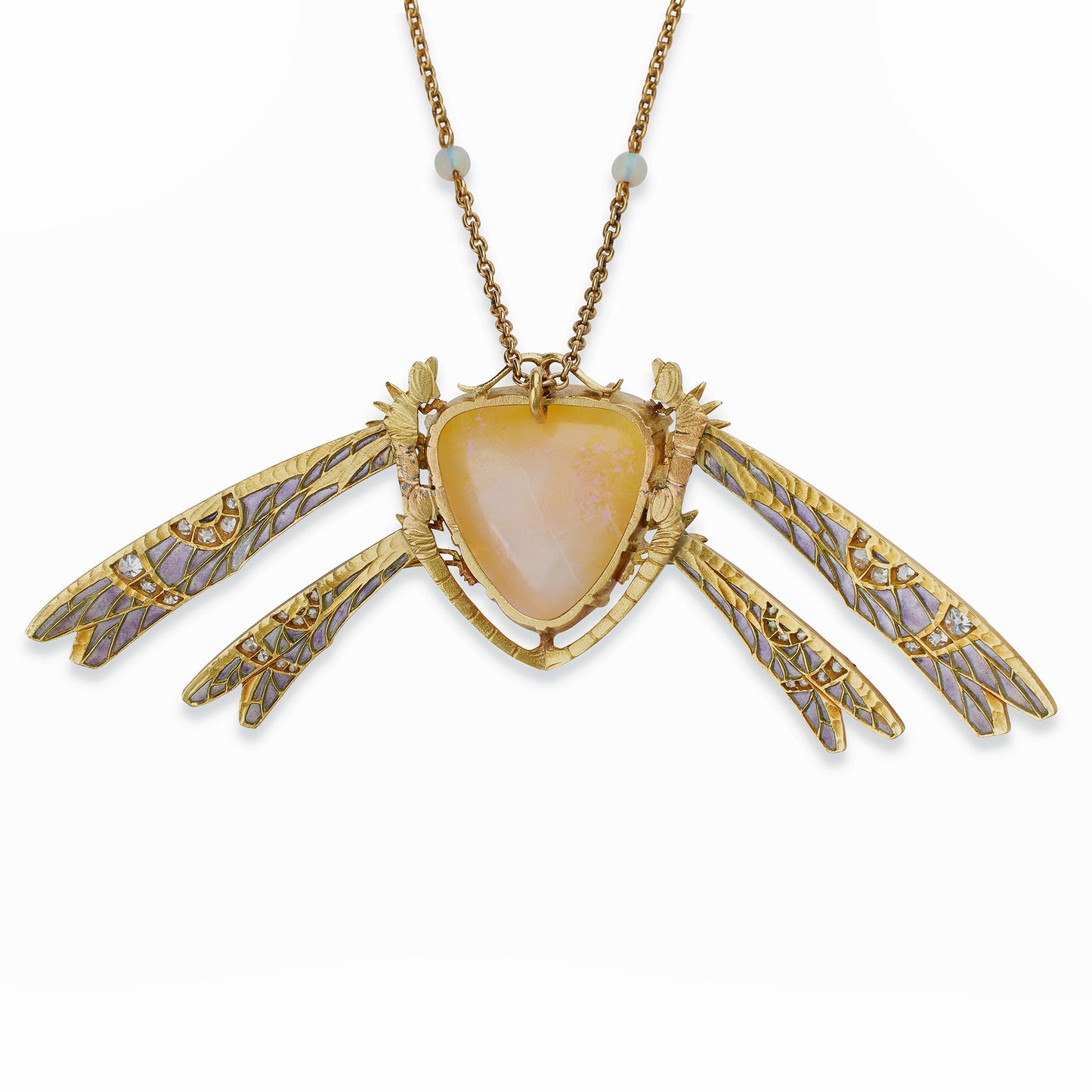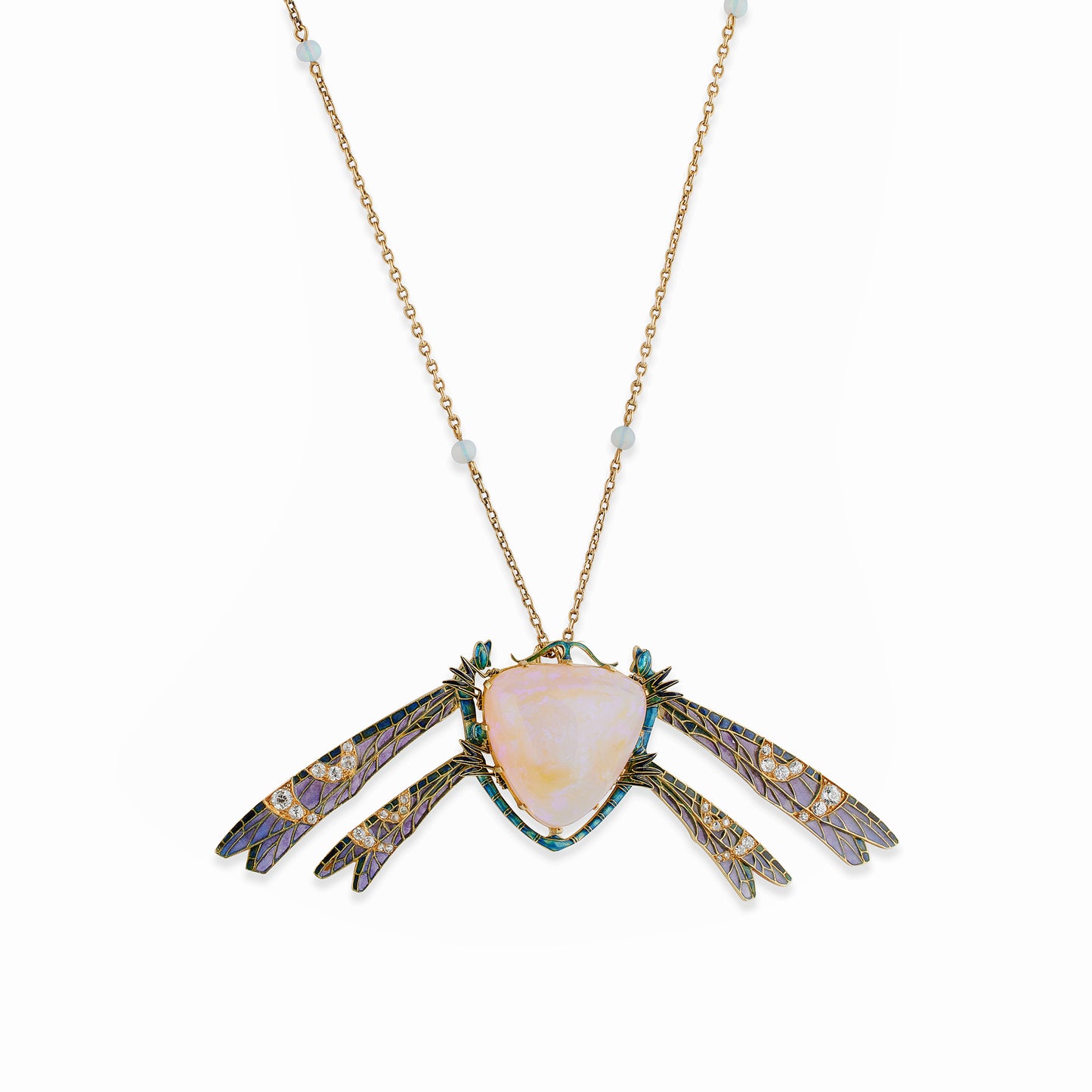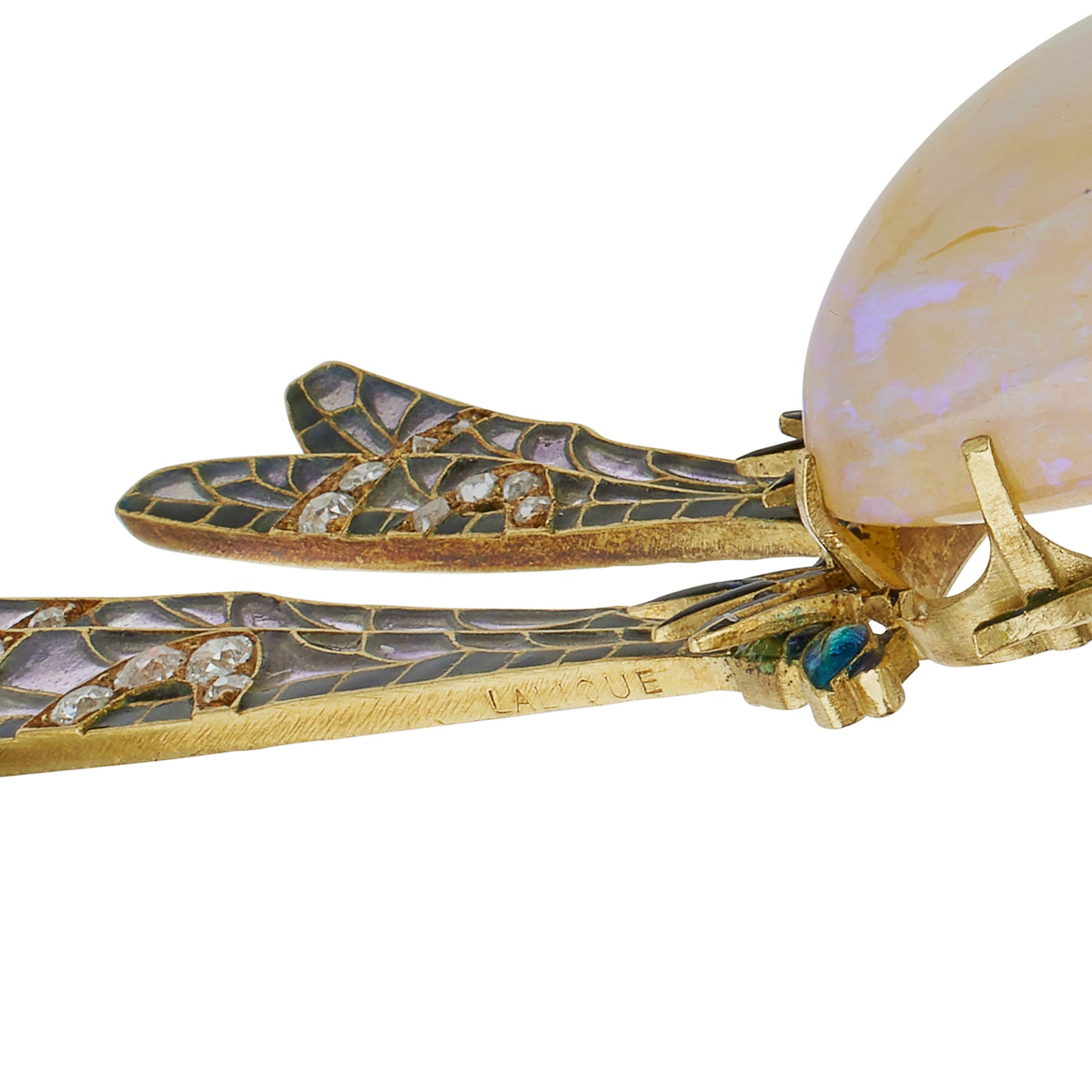René Lalique "Damselflies" Pendant
Item #: N-21371
Artist: René Lalique
Country: France
Circa: 1900-1902
Dimensions: 1.50" length, 3.75" width.
Materials: 30 old European-cut diamonds (approximate total weight 0.70 carat); 1 cabochon fire opal; Plique-à-jour, Paillonné and Champlevé Enamel; 18K Gold
Signed: LALIQUE
Exhibition History: A dragonfly necklace employing a similar combination of plique-à-jour, pailonné, and champlevé enamel is held in the collection of the Musée Orsay (OAO 898) and is on view there.
Literature: An elaborate damselflies necklace with wings of similar design dated circa 1900-1902 is pictured in The Master Jewelers, Kenneth Snowman, ed., p. 133.
Item #: N-21371
Artist: René Lalique
Country: France
Circa: 1900-1902
Dimensions: 1.50" length, 3.75" width.
Materials: 30 old European-cut diamonds (approximate total weight 0.70 carat); 1 cabochon fire opal; Plique-à-jour, Paillonné and Champlevé Enamel; 18K Gold
Signed: LALIQUE
Exhibition History: A dragonfly necklace employing a similar combination of plique-à-jour, pailonné, and champlevé enamel is held in the collection of the Musée Orsay (OAO 898) and is on view there.
Literature: An elaborate damselflies necklace with wings of similar design dated circa 1900-1902 is pictured in The Master Jewelers, Kenneth Snowman, ed., p. 133.












